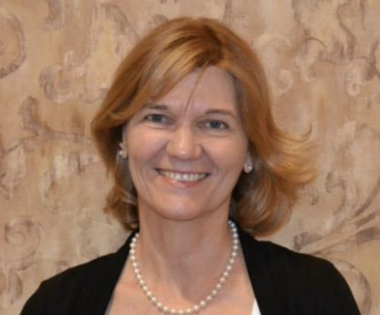Through mediation, Beth Bailey helps renters and landlords avoid eviction
Beth Bailey was studying to become an environmental lawyer when she first learned about mediation, a conflict resolution process that allows two parties to come to an agreement outside of the law/Court. Captured by the idea of mediation, Beth worked with several universities to craft her own academic program and earn a master’s degree in mediation. As part of her first position as a mediator in Hennepin County, she began providing mediation services at the Hennepin County Housing Court.
Beth vividly remembers the first day she provided mediation services at Housing Court. Struck by how quickly renters could lose their homes in eviction cases, she remembers saying, “I had no idea this happens in America.” That moment sparked her dedication to housing issues. “I was shocked by how quickly people could move from housing to being homeless, how transactional that process was. There wasn’t time for people’s stories.”
But she was also struck by the power of mediation to resolve tenant-landlord conflicts. “I saw that landlords and tenants were able to work together through mediation to create an agreement that the Court wouldn’t have the authority to order. In that moment, people have more authority.”
Beth has been conducting housing mediations ever since. Now the Executive Director of Community Mediation and Restorative Services (CMRS), she has a unique perspective on preserving housing stability.
“By the time you do 15,000 landlord-tenant mediations, you realize that landlords and tenants are swimming in the same soup – this system isn’t working for either.” She says that in most of the cases she has mediated, landlords file evictions for two reasons: to kickstart a conversation and to accelerate financial resources. Eviction does not have to be the go-to tool to achieve this; mediation can accomplish those two things without the damage of an eviction filing. “We can do so much better for renters and landlords by creating alternative tools in cases of nonpayment of rent. Eviction should be the last-ditch effort.”
Beth says that mediation in eviction cases is effective because it is relational rather than transactional; a purely transactional process doesn’t fit human beings. “People aren’t motivated to find a solution until they are seen and heard.” Conversations surrounding payment plans and rent assistance programs are not productive until people have been seen and heard, when both the renter and landlord have uninterrupted time to share their story in their own way. “There’s a unique place for mediation to guarantee that those conversations begin in that way.”
However, after mediating thousands of eviction cases, Beth notes, “At the end of the day, there’s a math problem.” Renters are cost-burdened, landlords are burdened by their mortgage, and there is an overall lack of resources in the face of growing affordability challenges. This math problem has been exacerbated by the pandemic, but Beth is hopeful that federal COVID relief dollars offer a real opportunity to close the gap.
Over the course of the pandemic, CMRS has helped administer COVID rent assistance, and Beth has gained more insight on the timeline and coordination of housing stability resources. “Housing resources are incredibly siloed, but people’s lives don’t fit into silos. People don’t always know what resources they need, and they’re expected to navigate the system in a crisis timeline. We need to shift that burden onto the service providers, not the family in crisis.”
To Beth, this means that mediation does not only happen at the table between a landlord and renter; mediation must also happen on the system level. Service providers need to sit at the table together and ensure that they are meeting the needs of the moment. She asks herself, “Which service provider needs to be talking with which provider? How do we insert into that space the voices of people who are actually impacted by the system?”
Beth foresees more challenging mediations in Court and outside of Court as the eviction moratorium phases out this fall. “Whether landlords and renters want to continue their relationship or part ways, there’s a need to work together to create a pathway forward.” Increasingly, CMRS is working with culturally specific organizations locally to connect with renters most impacted by housing instability in a relational way, and they are working with Community Mediation Minnesota statewide to further improve coordination among mediation providers and financial resources.
Since the pandemic began, CMRS has supported hundreds of renters and landlords through mediation services and through financial assistance navigation. When Beth thinks about their impact, she thinks about author Matthew Desmond’s words: “Home is the place where you can be yourself. There are a lot of things we don’t have control over. Having stable housing makes it so much easier to deal with everything else in life. Everything else seems to build on that foundation.”
